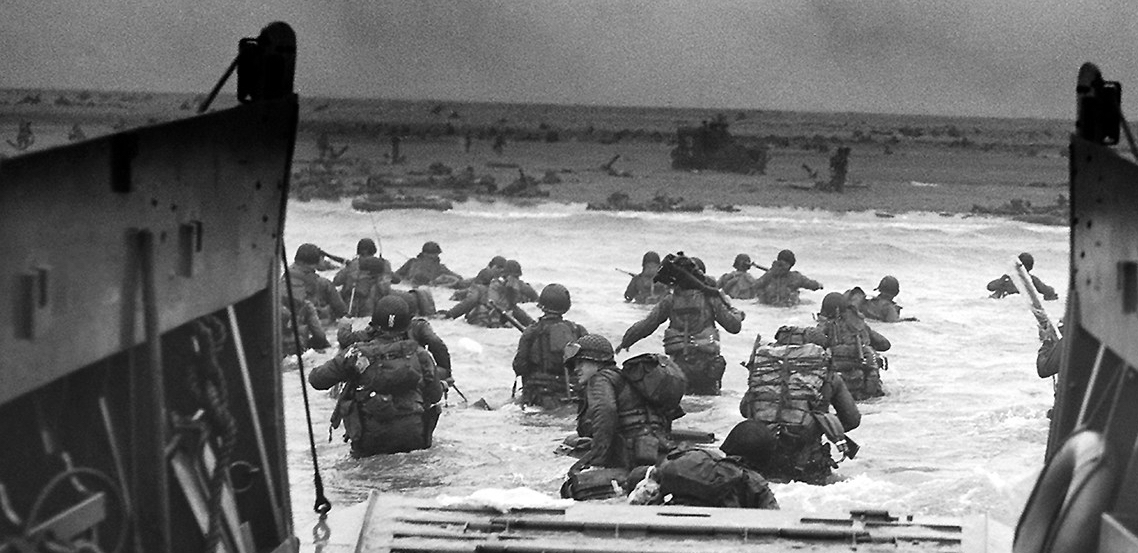
This is a light machine gun team of 3rd Battalion, Eighth Marines, 2nd Marine Division, coming out of the water at Tarawa. These Marines have only just hit the beach into a hurricane of Japanese fire. They are preparing to push forward into the teeth of the island’s defensive belts.
I’ve seen this picture many times, but I never fail to be humbled by the humanity of this scene. It always brings a lump to my throat, As I type these words, my eyes are misty as I think of the sacrifice required in war.
We don’t know the names of these Marines, but this picture says everything about what it cost to achieve victory against Japan. There are three Marines in the picture’s foreground. To the left, one holds the tripod for a light machine gun. Kneeling to the right is an M1-armed Marine, possibly a squad leader. At the bottom of the frame, a third Marine lies facing the camera. He looks as if he has dozed off with his head resting in the crook of his arm. He is dead.
How long did this young Marine serve before his death in the opening minutes of D-Day? Who loved him back home, and how many grieved when they read the news? One thing is certain. His is the face of World War II.
When this photograph was first released for publication after Tarawa, the dead Marine was cropped out. I understand why the censors did that, because someone at home would almost certainly have recognized the Marine.
Noted war correspondent Robert Sherrod landed with the first waves on Red 3. In his 1944 book Tarawa, Story of a Battle, Sherrod captured the words of General Holland M. Smith as he surveyed the battlefiel. As he gazed upon the corpse of a young Marine who fell giving the last full measure of devotion, General Smith said:
“How can men like that ever be defeated? This Marine’s duty was to plant that flag on top of the seawall. He did his duty, though it cost him his life. Semper Fidelis meant more to him than just a catch phrase.”
As we reflect today on the war’s fallen, it is easy to trivialize their sacrifice. We say, “They died for freedom,” or, “They were the heroes.” Both are factual, but they mask other important truths. First, most of the dead didn’t want to die–they wanted to live, but not many had a choice. Second, their brother Marines who survived were, for the rest of their lives, left with the haunting question, “Why Joe, or Pete, or Gizmo, and not me?”
Never forget, Mark
